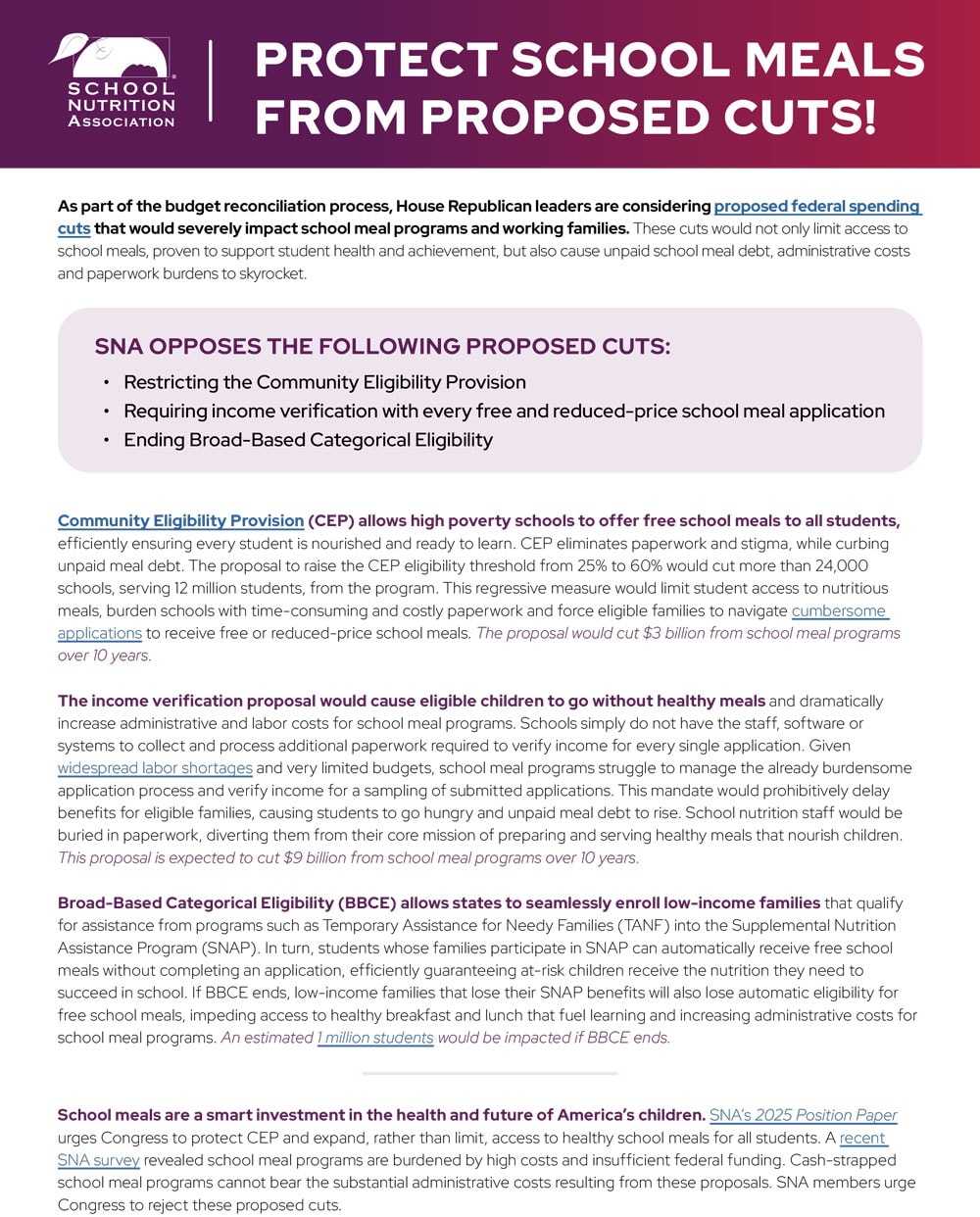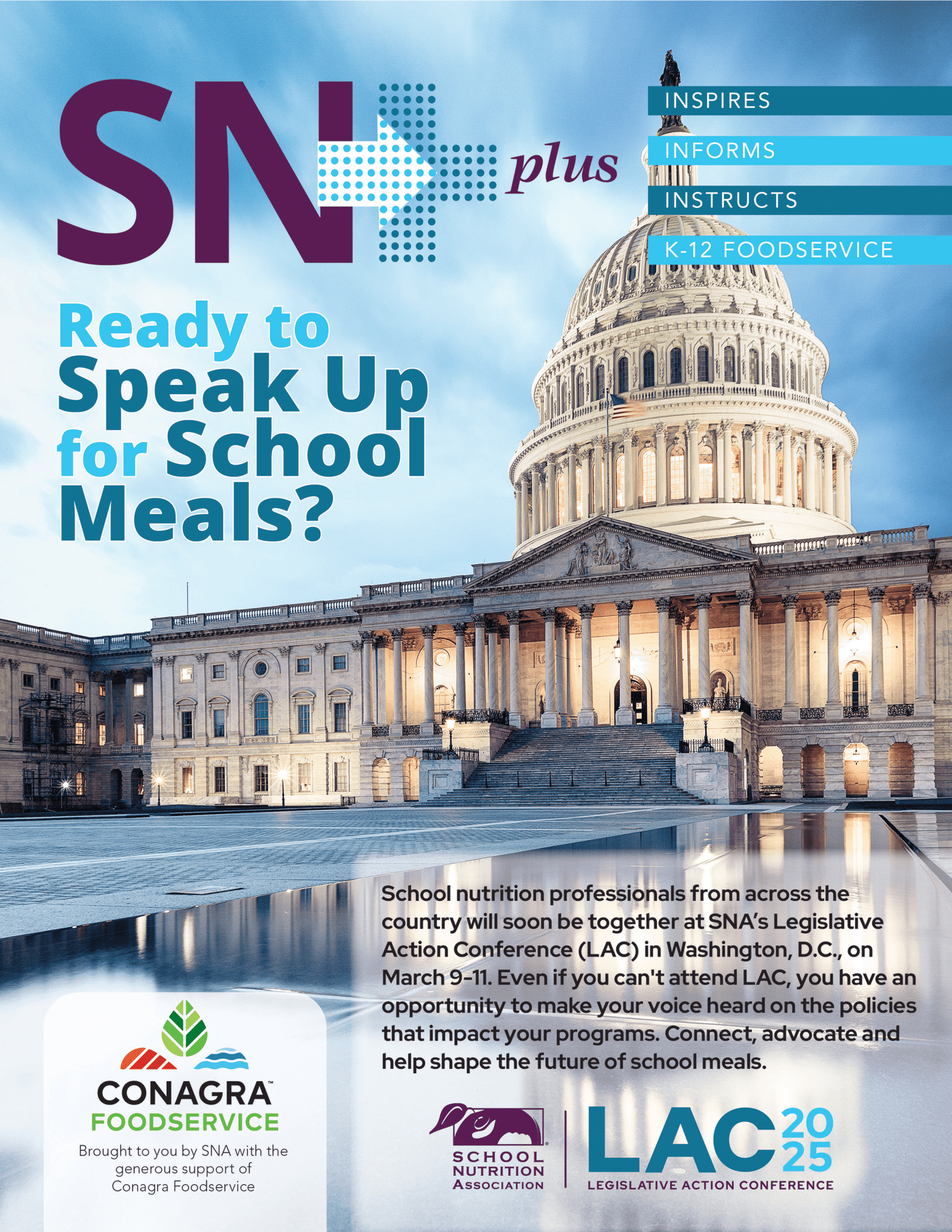Resource
2022 Position Paper Fact Sheet: Ensure Future Nutrition Standards Are Achievable and Keep Students Eating and Enjoying School Meals
Research shows children receive their healthiest meals at school. Current nutrition standards require school meals to offer fruits, vegetables, whole grains and lean protein, and limit calories, saturated fat and sodium.
USDA recently issued new transitional standards through SY 2023/24, which make modest changes to current standards, recognizing that school meal programs continue to face tremendous challenges due to the pandemic. However, the Department will propose long-term nutrition rules this fall. Future nutrition mandates will only be successful if students continue to consume school meals. Congress and USDA must work with school nutrition professionals to guarantee the long-term standards are both achievable and acceptable to students.
An overwhelming majority of school nutrition directors have expressed concerns about the feasibility and impact of future sodium rules. SNA’s Back to School 2021 Survey found:
- Just 11% anticipated being able to meet the previously established “Final Target” sodium limits
- 74% were extremely concerned about the impact of these limits on their programs, with a total of 97% expressing concern
Among the challenges to meeting those previously established sodium limits, more than 95% of respondents cited product or ingredient availability, negative impact on student meal participation and naturally occurring sodium in foods such as milk, low-fat cheese and meat. Nearly 70% or more cited these as “significant” challenges. Limitations on scratch cooking, such as staff, infrastructure or schedule constraints, were also cited by nearly 90% of school nutrition directors as a challenge.
Persistent, widespread supply chain disruptions have intensified these problems. Food companies and distributors have streamlined offerings and reduced the geographic areas they serve, leaving many meal programs without access to foods that meet highly specialized meal pattern requirements. SNA’s November 2021 Supply Chain Survey found more than 96% of respondents cited challenges with suppliers not carrying sufficient menu items needed to meet nutrition standards, such as whole-grain, low-sodium and low-fat options. Consolidation in the school nutrition industry signals the lasting impact of these disruptions on the K-12 market.
These multifaceted, pervasive menu planning challenges underscore the need for feasible long-term nutrition rules that ensure students continue to receive and consume well-balanced, nutritious school meals.
Category
Resource Type
Year Added
2021
Related Resources

Protect School Meals from Proposed Cuts
Read More

SN Plus: Ready to Speak Up for School Meals?
Read More

